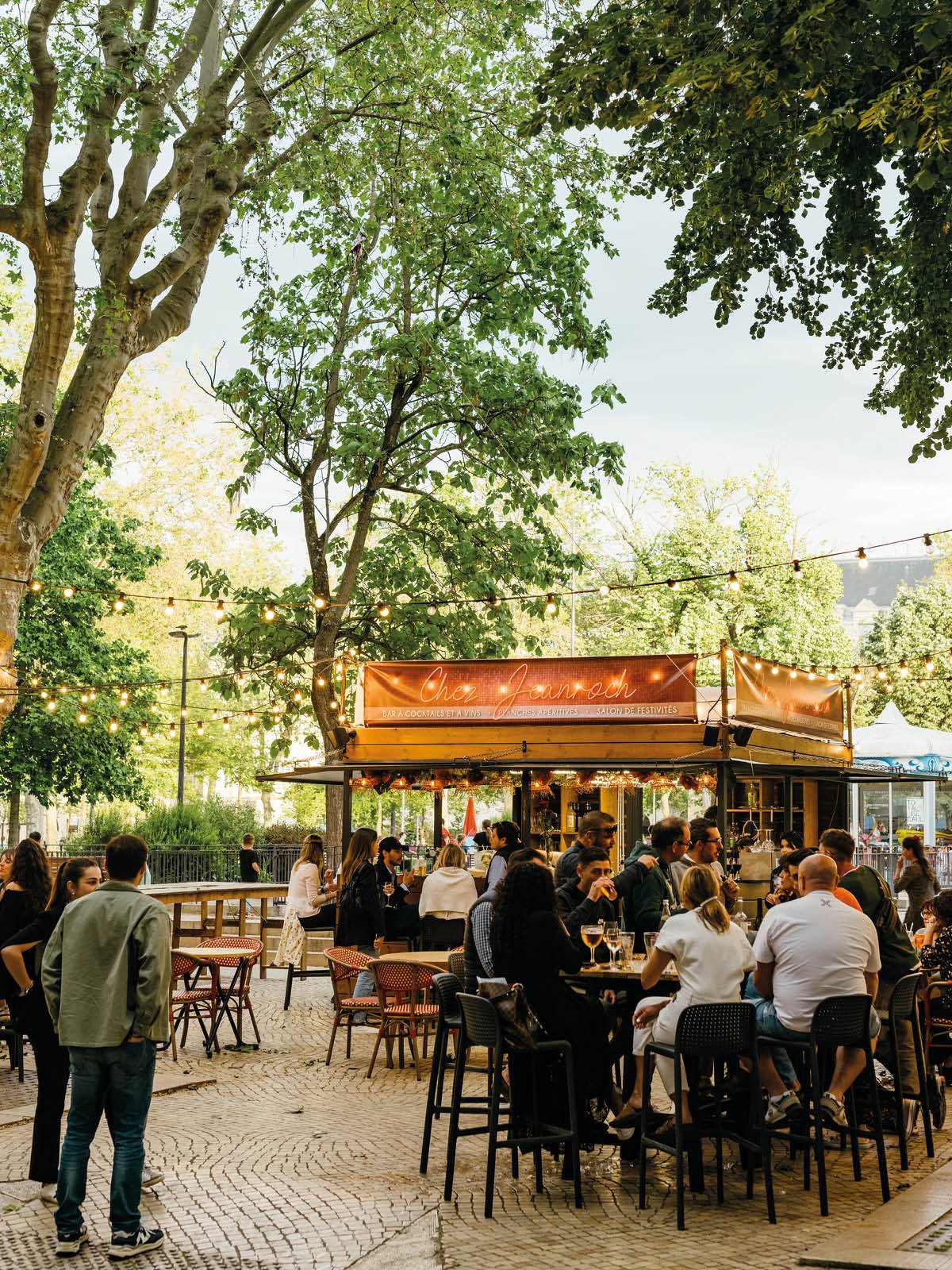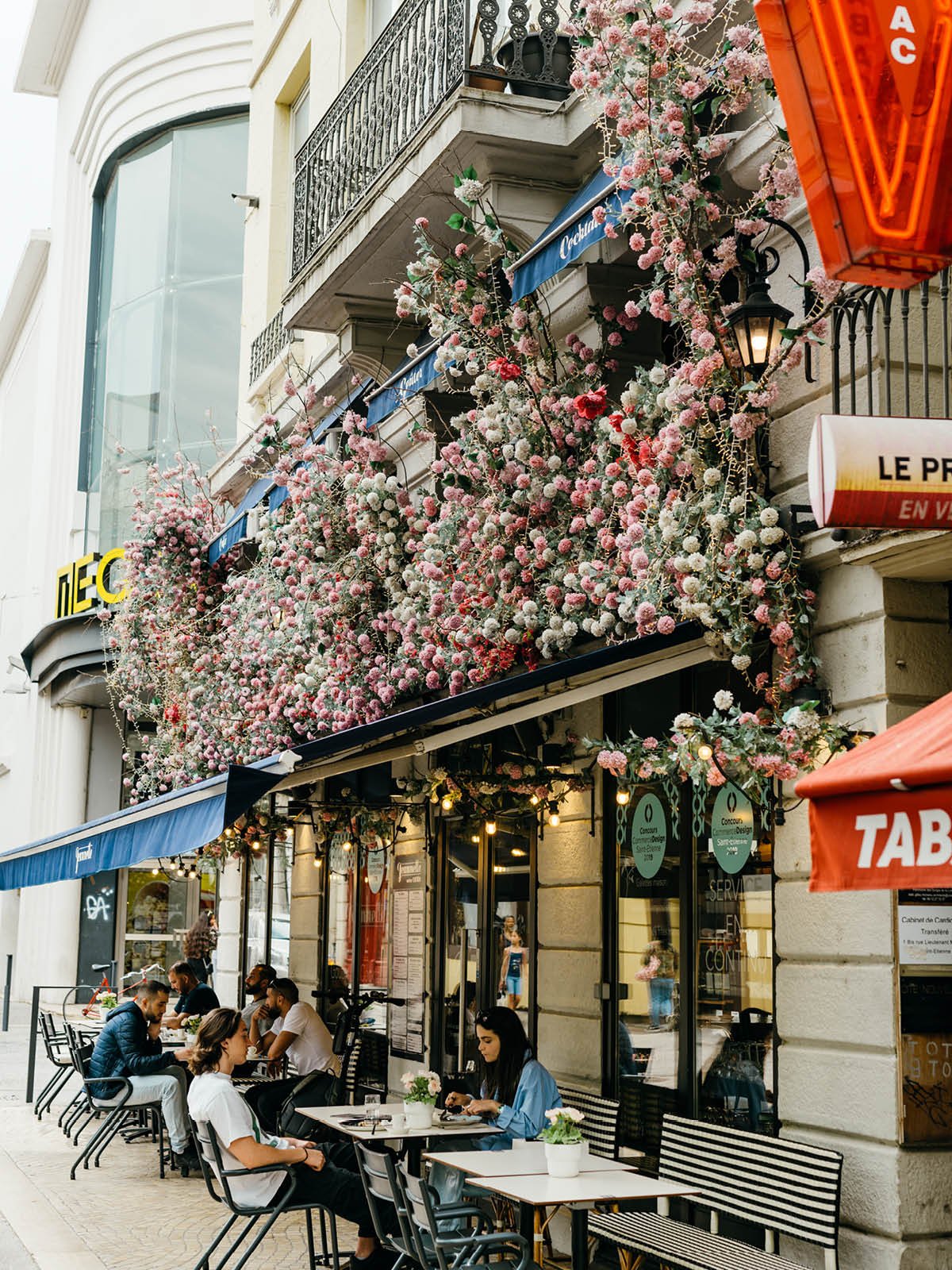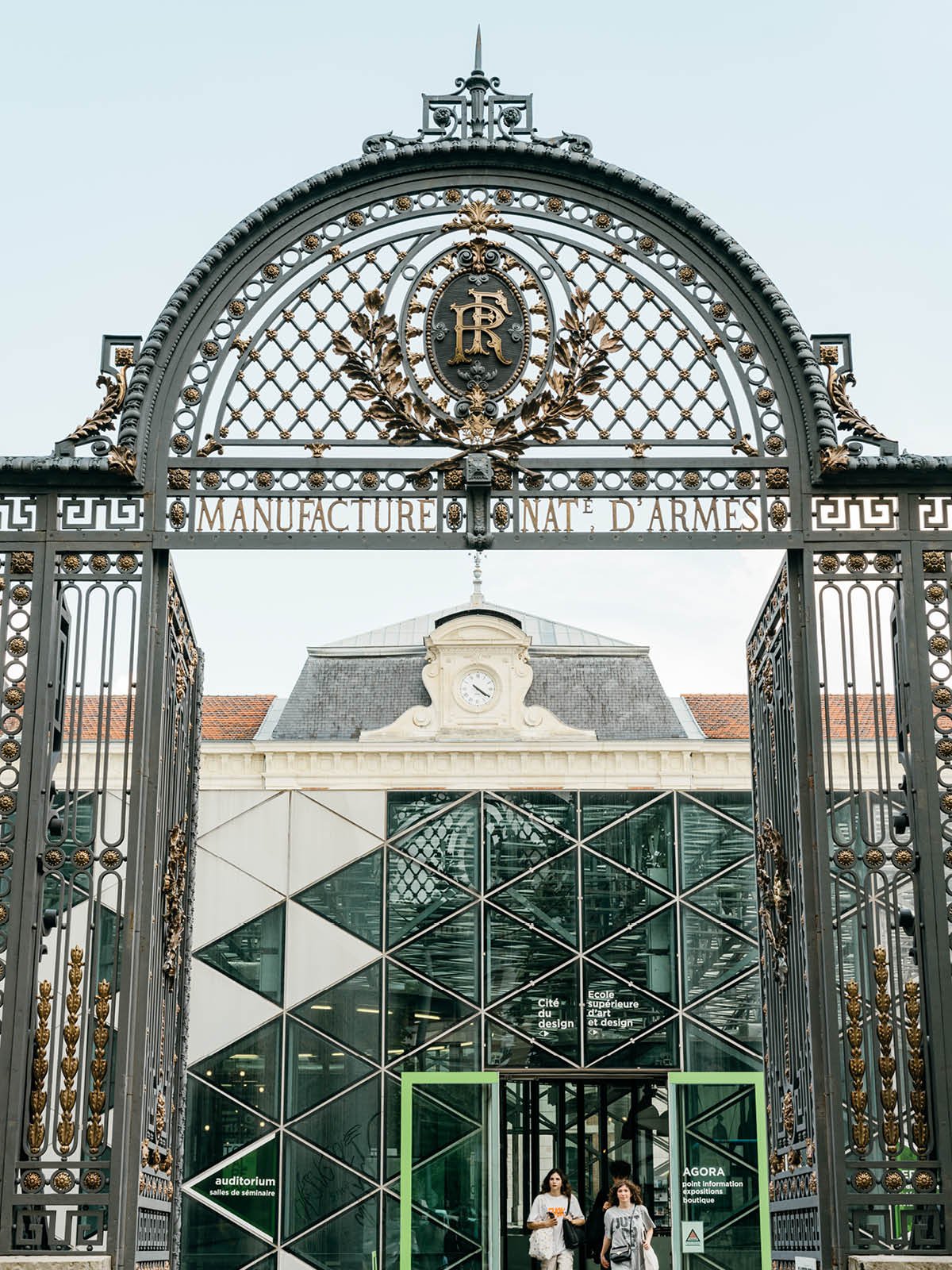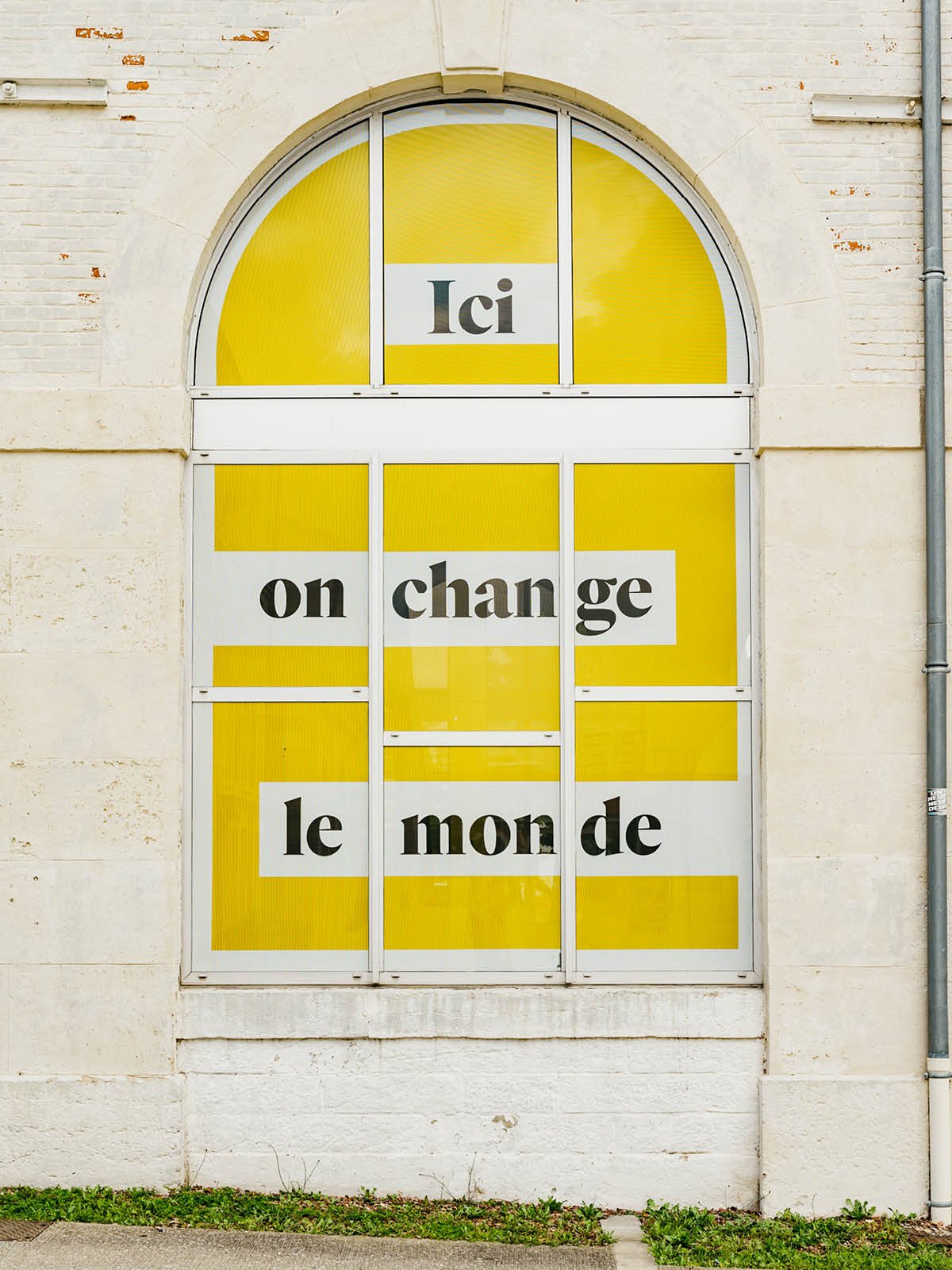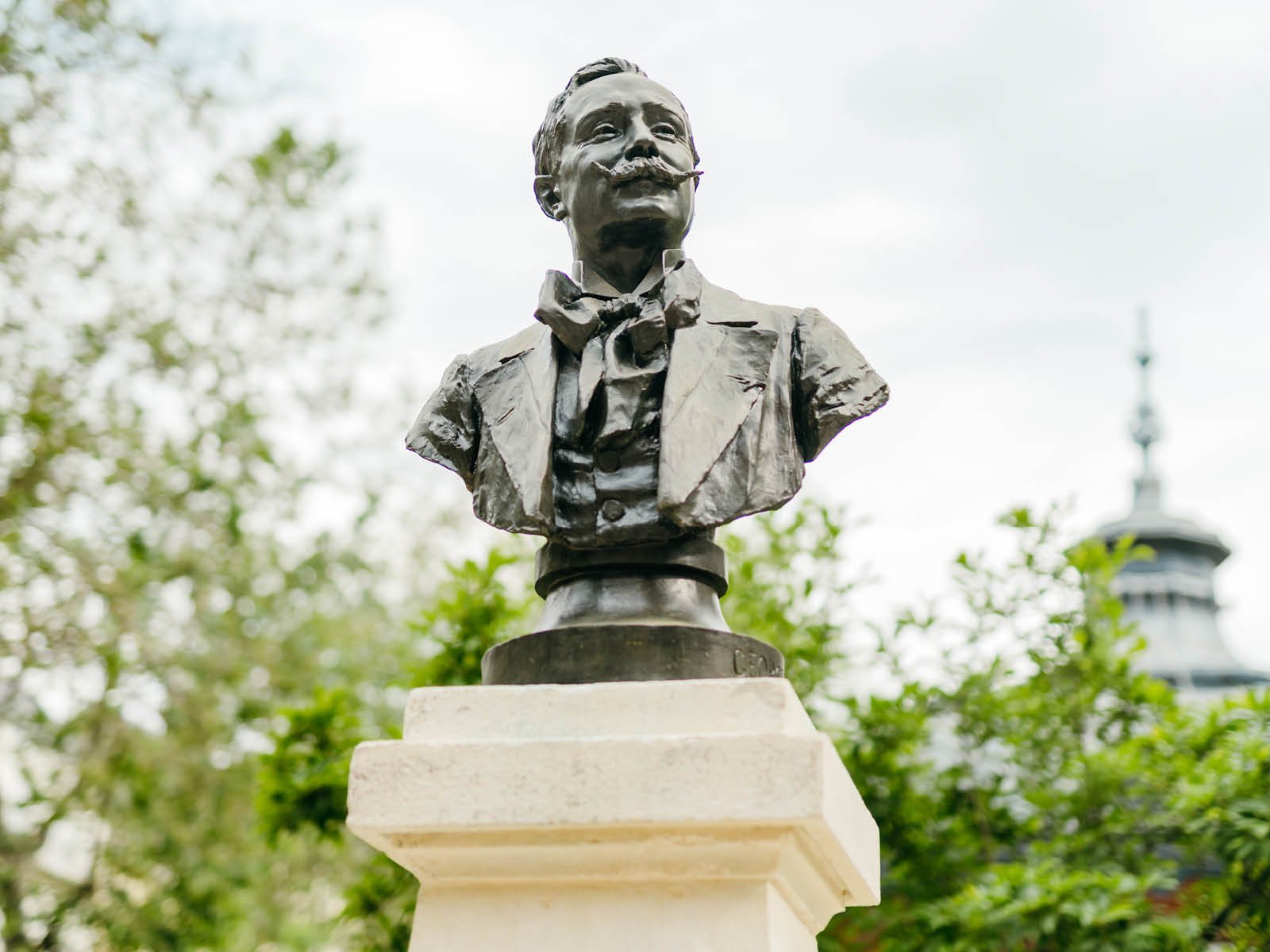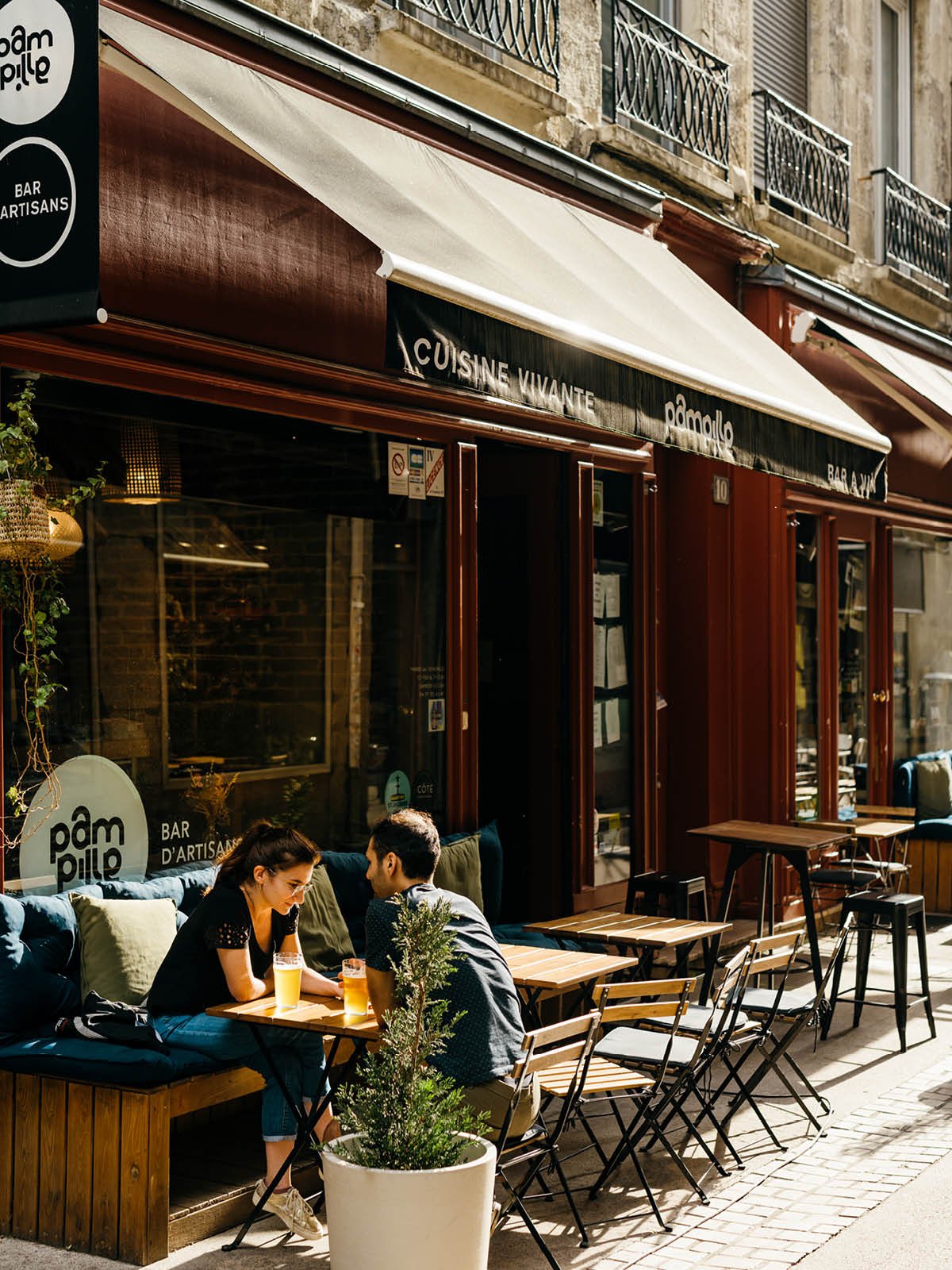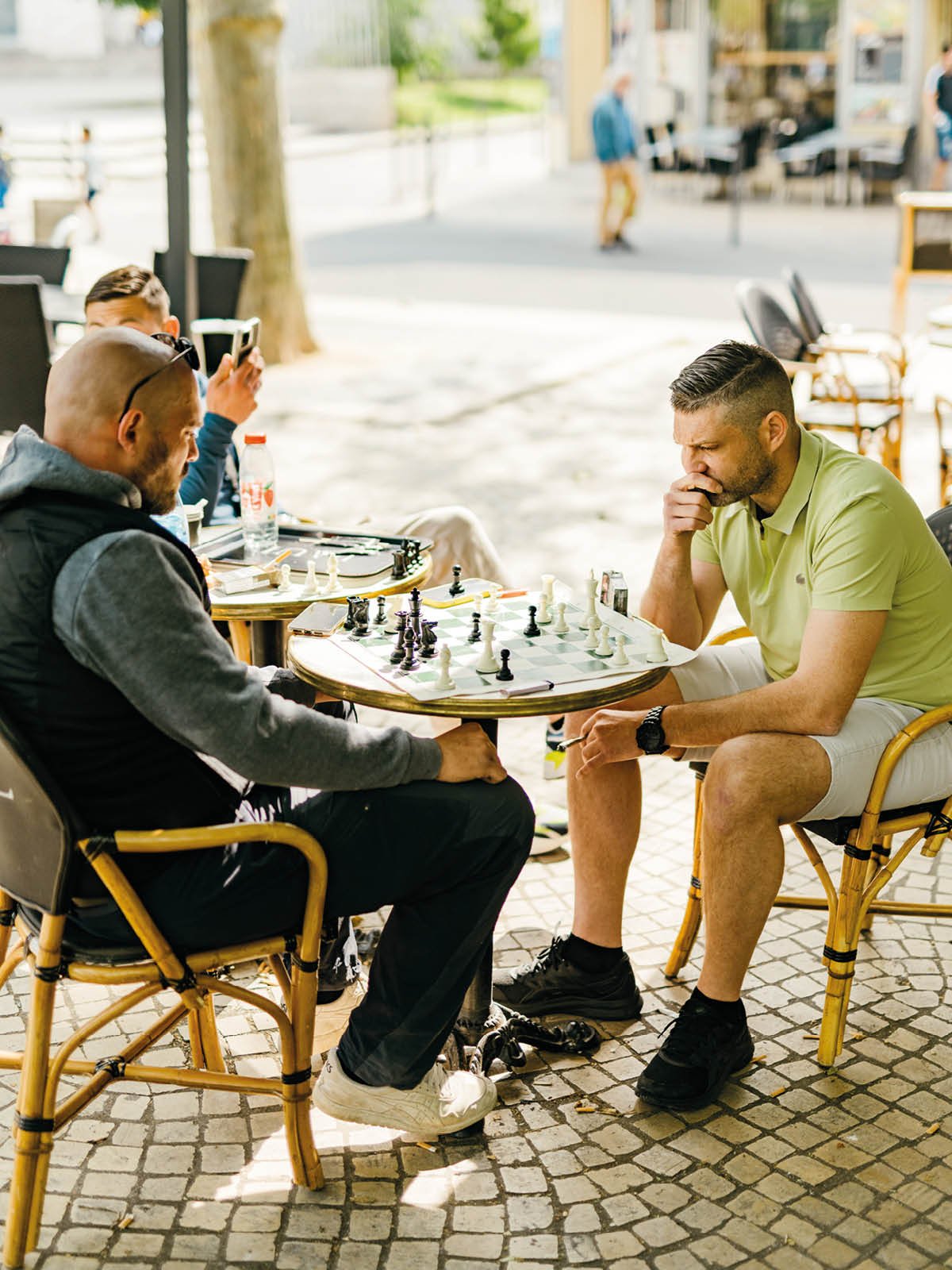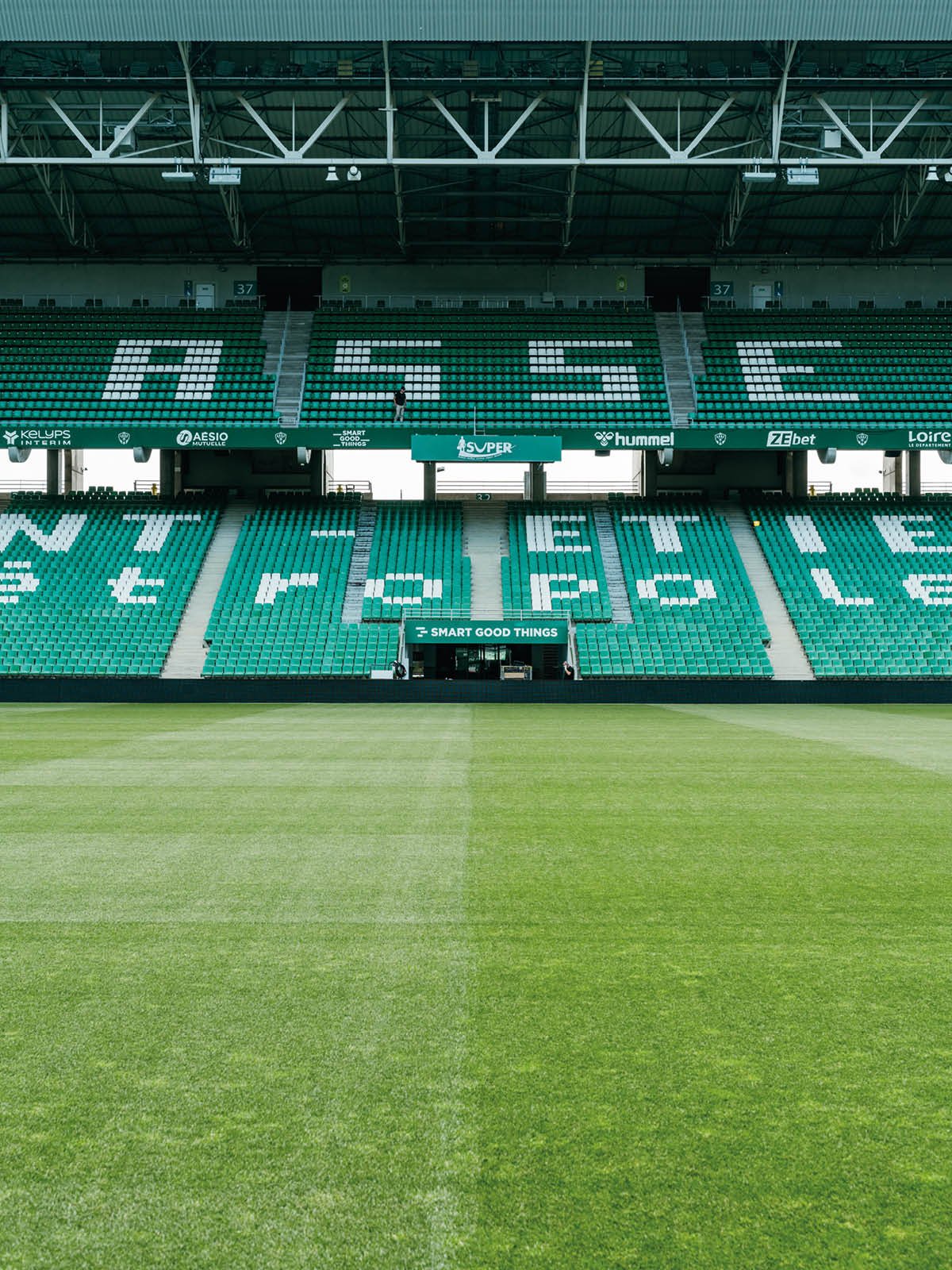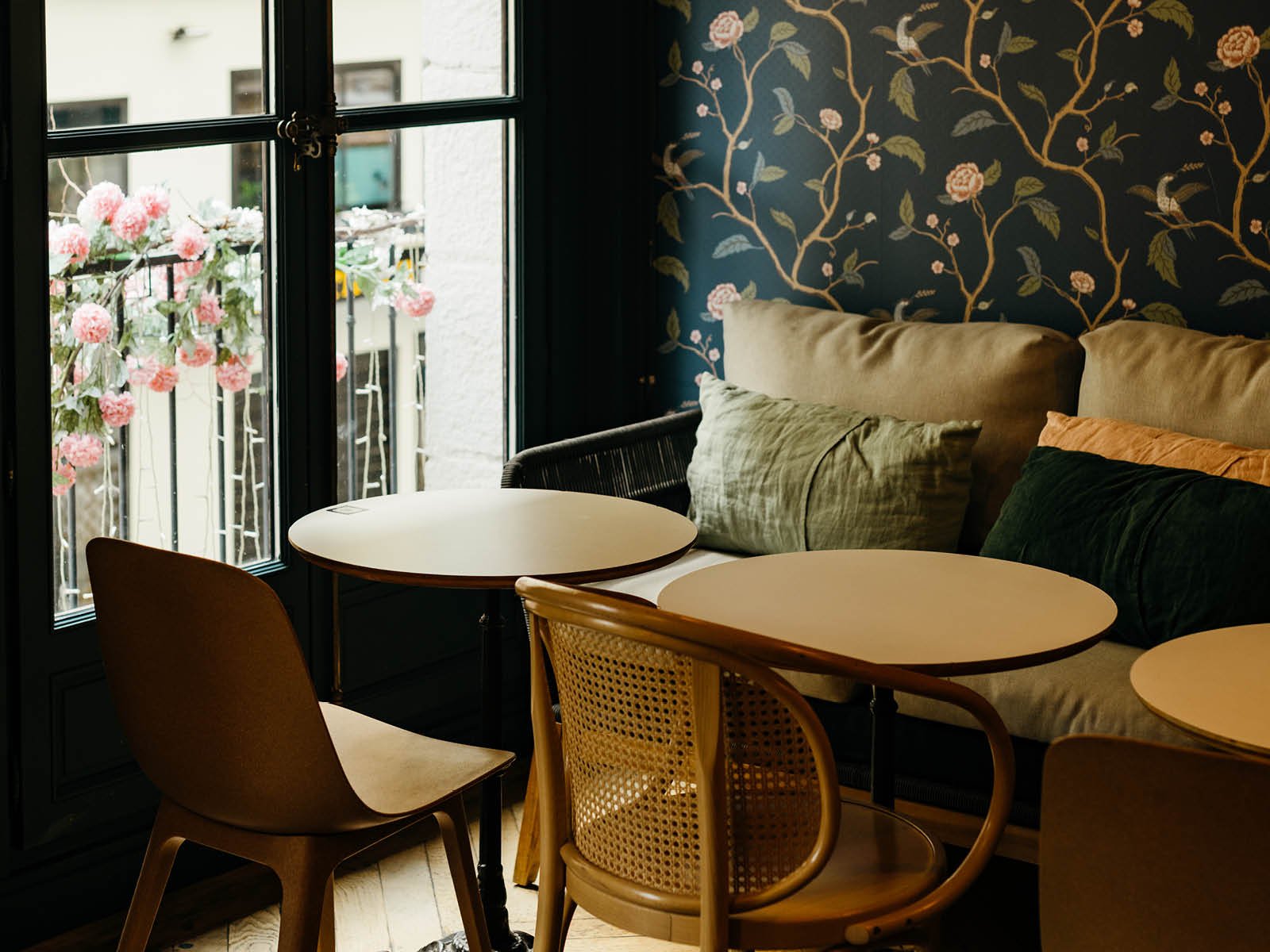Rugby Travel guide to Saint-Étienne
In a city that is re-inventing itself, bordered by the surrounds of the Massif Central, rugby is coming to town. Saint-Étienne’s sporting pedigree comes from the football club, but events are its speciality; two Euros, a football World Cup and two Rugby World Cups have been hosted here. Whether the ball is round or egg-shaped, Saint-Étienne’s got it covered.
What’s Saint-Étienne like?
Saint-Étienne is a city renewed. Once the industrial capital of Europe in the 19th century, a cultural and urban overhaul has redefined it as a centre for design. You feel that with every step you take, the avant-garde architecture interspersed with modern touches, from elaborate public benches and statues to office blocks dressed in cherry red and lemon yellow. The is a vibrant city centre, but with nature reserves just fifteen minutes’ drive away the city is right on the border between the urban and the rural. Saint-Étienne certainly feels like a city looking to the future, perhaps with an occasional glance over the shoulder.
What are the claims to fame of Saint-Étienne?
The football team, AS Saint-Étienne, is a huge source of pride of the city. In the 1960s and 70s Les Verts were the dominant force of French football, winning ten league titles under legendary managers including Jean Snella, Albert Batteux and Robert Herbin; this was a French record until as recently as 2023 season when PSG won their 11th title. In recent years they haven’t been so successful, currently playing in Ligue 2, but the passion of the fans remains.
How do I get to Saint-Étienne?
Plane and train is the name of the game for travel to Saint-Étienne. You can’t fly directly into the city, but visitors will often fly into Lyon (ranging anywhere from £50 to £130 for an outbound flight from London) and make the 60-kilometre journey either by car or train.
Going by train may be the hassle-free option. The whole journey will take just over six hours by taking the Eurostar (from St Pancras International) to Paris Gare du Nord, with a second leg on the TGV to Saint-Étienne of around three hours. You can book tickets now for around £155.
The cheapest option will be via bus, a 17-hour journey from Victoria Bus Station for around £50.
Finally, if you’d prefer to drive, it will cost you somewhere between £150-220 for the ferry over and the 11-hour road trip.
How do I get to Stade Geoffroy-Guichard?
Located to the north of the city, only around two kilometres from the centre, it is incredibly easy to access the stadium. Simply get there by foot in around 45 minutes, or you can go north on tram 1 or tram 2 from Place Jean Jaurès, where the service is increased of kick-off. Alight at stop G. Guichard and it’s only a five-minute walk from there. You can also get there by hiring an electric bike.
For ease of travel it is possible for visitors to buy a City Pass from the Tourist Office which gives you unlimited access to the city's public transport networks.
What’s the Stade Geoffroy-Guichard like?
Built on old mining ground and opening its doors in 1931, the Geoffroy-Guichard may be the oldest stadium that hosted RWC 2023, but after beginning life with a single grandstand of 800 seats, it has grown over three generations of renovation into a 42,000-capacity legendary venue. The stadium is world famous for its electric atmosphere, earning its nickname as le Chaudron (the cauldron).
Where do you drink before a match at the Stade Geoffroy-Guichard?
Being so close to the city centre, it’s much better to stay around there for pre-match frivolities than the office blocks and industry buildings that make up the area around the stadium.
In the city centre is where you’ll find the best places to drink. The vibrant neighbourhood of Rue des Martyrs de Vingré will be effervescent with fans in town – just off here is Le Smoking Dog, which has delights for locals and visitors with a range of beers and live music. You’ll may be surprised at the assortment of Irish bars available too - Le Saint Patrick has rave reviews for food and beer, as does The Soggy Bottom.
Five minutes’ walk from here is Place Jean Jaurès, where the new Six Nations Pub and Beer Garden, right next door to each other, will be welcoming fans with open arms.
Do they play rugby in Saint-Étienne?
Given the popularity of football, rugby has not made a huge indent here. The local club, Club Athletique de Saint-Etienne Loire Sud Rugby (known as CASE) are currently in Federale 1 (the highest level of the French amateur game) but have competed in Pro D2 in the past. Their small Stade Etivalliere holds 3,000 spectators, but it’s worth a visit if you’re a hardcore rugby fan. Rugby is definitely welcome here – three games of the 2007 World Cup were hosted at the Stade Geoffroy-Guichard, with four more in 2023.
What can I do between games in Saint-Étienne?
If you’re looking for a cultural experience, then you won’t be short of choice - there are more museums in Saint-Étienne than you’ll know what to do with. There are plenty of places to go and feel the city’s industrial past, perhaps none better than the Musée d’Art et d’Industrie, which gives you an insight into the character of the city all in one place. Others include the Musee de la Mine, the best mining attraction in the county, gives you a taste of three hundred years of history, and the Cité du Design in the vast former armament factory is a perfect mix of old and new.
Other delights include the visionary architectural works at Le Corbusier site, a unique display of brutalism, or the workshops at Les Ateliers Weiss, the famous and historic chocolate factory of Saint-Étienne where you can make design your own.
For a sporting twist, head to the Musee de Verts at the Stade Geoffroy-Guichard, a brilliant display of the full history of one of France’s most successful and iconic clubs.
What are the best places to eat in Saint-Étienne?
Wherever you are in the city there are plentiful options for a bite. In the city centre, Les Halles Mazerat is the mecca for food lovers. Indulge in the covered market with stalls featuring all the best cuisine the city has to offer, around fifteen under the same roof. You have to try the local specialities of râpées stéphanoises (grated potato) with Sarasson (a cheese made from beaten cottage cheese with herbs) and saucisson. Les Halles emphasises the social aspect of food and drink, so make sure you sit back and spend some time here with friends, family or even join a table with strangers.
Over in Chateaucreux, the area with many of the most suitable hotels, Le Coissou, Wine bar La Cempote and Bistrot du Grand Hôtel offer a range of convenient places to eat and drink.
Around Cité du design and Village Rugby, Bistrot de la Galerie Ceysson-Benetière and La Fabuleuse Cantine are the best spots, the latter of which specialises in turning unsold produce from the area into creative cuisine. Also, if you’re making a trip to the stadium away from a match-day then the Brasserie du Stade Geoffroy Guichard, which has an amazing view over the pitch, is a must.
What are the best places to stay in Saint-Étienne?
The best and most convenient place to stay in the city is in Chateaucreux, where there are a number of delightful hotels. Novotel Saint-Étienne Centre Gare Châteaucreux is probably the best of the bunch, if not the neighbouring Ibis Gare Chateaucreux.
Closer to the city centre, City Loft Hôtel is another good option, as is Hôtel Continental a short walk up the street. Wherever you stay, the brilliance of the city is that everywhere is so easily accessible.
Check out the Tourist Office website for a variety of options: saint-etienne-hors-cadre.fr
Are there any campsites in or around Saint-Étienne?
In the beautiful surrounds of the Loire gorges, here are some options for camping during the World Cup.
Camping de la Belle Etoile, is a family run site in Saint-Bonnet le Chateau, thirty minutes west of the city. With 54 pitches, a swimming pool and countless activities, it’s the perfect sport for a place to stay in the heart of the mountains.
To the north there is the 4-star Paradis La Val de Coise, with 91 pitches and all the facilities you could want. It’s only 20 minutes’ drive from the stadium.
Slightly farther out you could also make camp at the beautiful Gorges de la Loire – if you enjoy hiking and kayaking, this is the place for you.
What is close to Saint-Étienne?
If you want to get out of the city and into nature, there’s no city easier to do that than Saint-Étienne. The neighbouring Pilat Regional Nature Park is a paradise for hikers and mountain bikers, as is the scenic high point of the massif at Crêt de la Perdrix.
You can also discover the incredible gorges and beaches of the Loire Nature Reserve, with incredible views and the village of Saint-Victor-sur-Loir to uncover.
How do I find out more about Saint-Étienne?
For more information on Saint-Étienne, visit saint-etienne-hors-cadre.com




